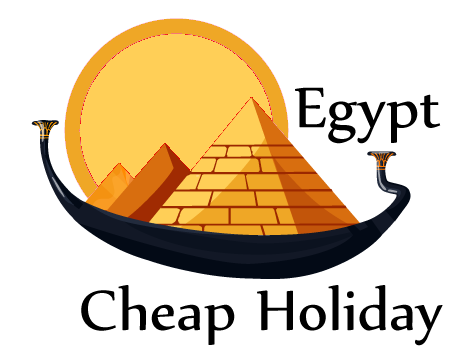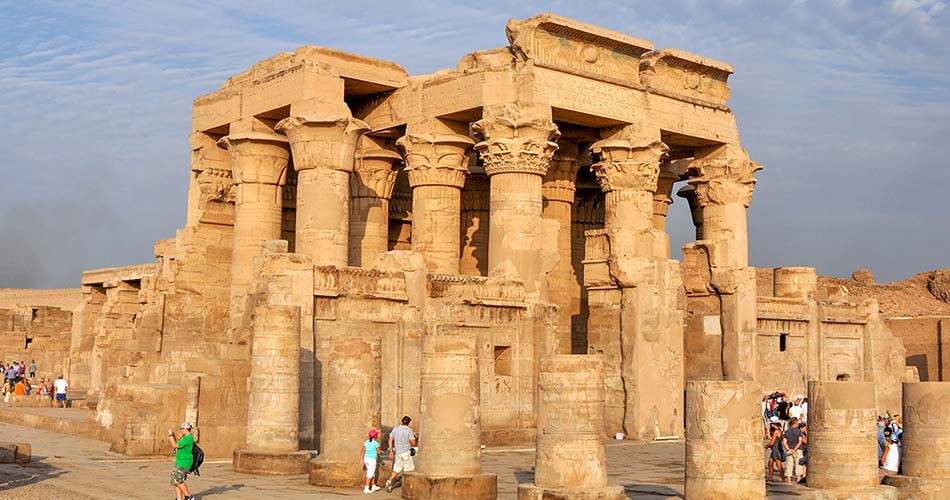Kom Ombo Temple is a unique and fascinating ancient Egyptian temple
Kom Ombo Temple located in the city of Kom Ombo, about 50 kilometers north of Aswan.
Kom Ombo Temple was built during the Ptolemaic dynasty between the 2nd and 1st centuries BC, and it is dedicated to two gods, Sobek, the crocodile god, and Horus, the falcon-headed god. The temple is unique because it is actually two temples in one, with two identical entrances, two hypostyle halls, and two sanctuaries. The southern side of the temple is dedicated to Sobek, while the northern side is dedicated to Horus.
Kom Ombo Temple is situated on a high bank of the Nile River, which offers beautiful views of the river and the surrounding landscape. The temple’s architecture is impressive, with towering columns, intricate carvings, and well-preserved reliefs that depict scenes from ancient Egyptian mythology and history. The walls of the Kom Ombo Temple are decorated with hieroglyphics and reliefs that provide insight into the beliefs and practices of ancient Egyptians.
One of the most interesting aspects of the Kom Ombo Temple is its association with the crocodile god, Sobek. Crocodiles were once common in the Nile River, and they were revered by ancient Egyptians as symbols of fertility and power. The temple’s southern side is dedicated to Sobek, and it features a small museum that displays mummified crocodiles and other artifacts related to the worship of the crocodile god.
In addition to its architectural and religious significance, the Kom Ombo Temple is also notable for its medical significance. The temple contains a relief that depicts surgical instruments, making it one of the earliest known representations of medical instruments in history. The relief depicts a variety of surgical tools, including scalpels, forceps, and retractors, as well as a depiction of a patient undergoing surgery on his foot.
The Kom Ombo Temple is a fascinating and unique destination that offers visitors a glimpse into the religious, architectural, and medical practices of ancient Egyptians. The temple’s association with the crocodile god, Sobek, and the falcon-headed god, Horus, provides insight into the complex mythology and beliefs of ancient Egyptians. The temple’s impressive architecture, with its towering columns and intricate carvings, is a testament to the skill and talent of ancient Egyptian architects and craftsmen. And the temple’s association with early surgical instruments offers a glimpse into the medical practices of ancient Egyptians, making it a destination that is not to be missed.
Kom Ombo Temple was built on the site of an earlier temple, which was dedicated to the crocodile god, Sobek. The original temple was built during the Middle Kingdom period, which lasted from 2055 BC to 1650 BC. The Ptolemaic temple was built adjacent to the original temple, and it incorporated many of the earlier temple’s structures and decorations. The result is a temple that is a blend of ancient and modern, with elements from different periods of Egyptian history.
The temple’s association with the crocodile god, Sobek, is particularly interesting. Sobek was a powerful and important god in ancient Egyptian religion, and he was associated with the Nile River and fertility. The ancient Egyptians believed that Sobek controlled the annual flooding of the Nile, which was essential for agriculture and the survival of the population. Sobek was also associated with protection, and he was often depicted wearing a headdress with a sun disk and two feathers.
The temple’s southern side is dedicated to Sobek, and it features a number of interesting structures and decorations. One of the most impressive features is the crocodile pit, which is located in a small courtyard near the entrance. The pit contains the remains of mummified crocodiles, which were once worshipped by the ancient Egyptians. The temple also contains a relief that depicts Sobek holding a staff and a flail, which are symbols of power and authority.
The temple’s northern side is dedicated to Horus, the falcon-headed god. Horus was one of the most important gods in ancient Egyptian religion, and he was associated with the pharaoh and the ruling class. The temple’s northern side features a hypostyle hall with twenty-four columns, each with a different floral and geometric design. The hall leads to the sanctuary, which contains a granite shrine of Horus. The sanctuary also contains a relief that depicts Horus standing on a crocodile, which is a symbol of his power over the Nile.
The temple’s architecture is impressive, with towering columns, intricate carvings, and well-preserved reliefs that depict scenes from ancient Egyptian mythology and history. The walls of the temple are decorated with hieroglyphics and reliefs that provide insight into the beliefs and practices of ancient Egyptians. One of the most interesting reliefs is the one that depicts surgical instruments, which I mentioned earlier. This relief is located on the temple’s outer wall, and it is one of the earliest known representations of medical instruments in history.
In addition to its architectural and religious significance, the Kom Ombo Temple is also notable for its location. The temple is situated on a high bank of the Nile River, which offers beautiful views of the river and the surrounding landscape. The temple’s location also made it an important center of trade and commerce in ancient times, as it was a stopping point for caravans traveling between the Nile Valley and the Red Sea.
Overall, the Kom Ombo Temple is a fascinating and unique destination that offers visitors a glimpse into the religious, architectural, and cultural practices of ancient Egyptians. The temple’s association with the crocodile god, Sobek, and the falcon-headed god, Horus, provides insight into the complex mythology and beliefs of ancient Egyptians. The temple’s impressive architecture and well-preserved reliefs are a testament to the skill and talent of ancient Egyptian architects and craftsmen. And the temple’s association with early surgical instruments offers a glimpse into the medical practices of ancient Egyptians, making it a destination that is not to be missed.






